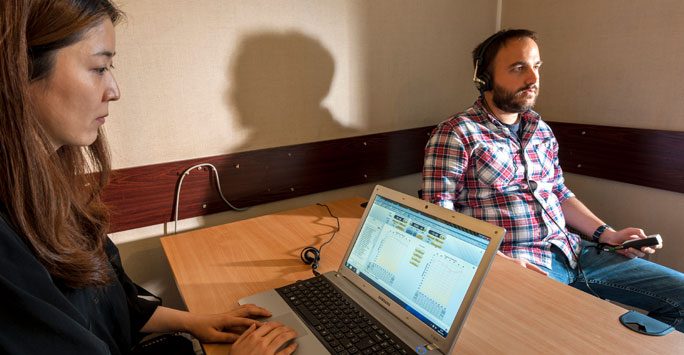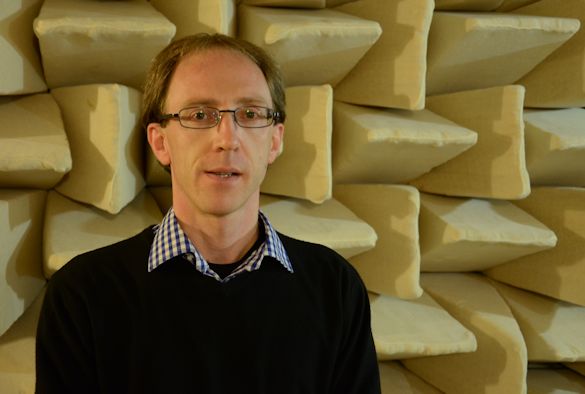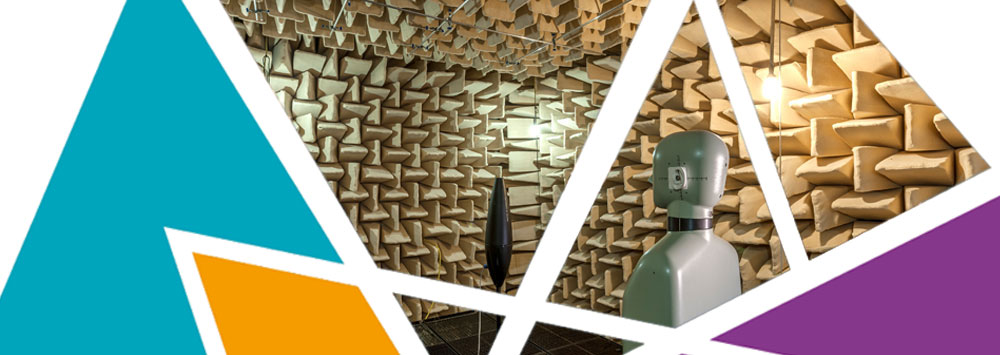The Challenge
In order to predict, assess and confirm the acoustic performance of new and refurbished buildings it is necessary to (a) define laboratory measurement procedures for building elements (e.g. walls, floors, windows) and building machinery, (b) produce validated prediction models that incorporate laboratory measurements, and (c) define field measurement procedures. At a European and International level, the construction industry requires Standards for both measurement and prediction to ensure efficiency and fairness for all parties that are involved in the design and assessment of building performance.
Research Action
Research in the Acoustics Research Unit on building acoustics naturally feeds into the development of European and International Standards. New Standards are required to address new problems or to address issues with new building elements and existing Standards require revision to improve their accuracy and ensure they satisfy the needs of industry. To achieve this, Professor Carl Hopkins carries out research on the measurement and prediction of sound transmission in buildings in the laboratory and the field, Professor Barry Gibbs develops laboratory measurements of the structure-borne sound power from building machinery and Dr Pyoung Jik Lee carries out research on the subjective evaluation of sound in buildings.

Working in Partnerships
Carl is Chair of the British Standards committee on building acoustics and Convenor of European and International Standards groups on the measurement of sound insulation in buildings. Barry is the main contributor to the European working group on structure-borne sound power input from machinery into building structures. The membership of these groups primarily consists of acoustic consultants, laboratory test houses, manufacturers and trade associations.
In Korea and Japan there has been greater consideration of the annoyance due to heavy impacts such as children jumping and footsteps in bare feet; hence Pyoung Jik is currently carrying out research with Korean colleagues on the subjective evaluation of impact sound insulation.
Outputs and Outcomes
Carl’s work has led to new measurement procedures to improve the accuracy of low-frequency sound insulation measurements, and new procedures to sample the sound field in rooms; the latter is beneficial to acoustic consultants that want to be inside the receiving room to monitor the background noise on construction sites with intermittent, high noise levels and minimise the amount of cables on site. His research on the prediction of impact sound insulation and flanking transmission in heavyweight buildings identified errors in both laboratory and field measurements of the vibration reduction index that have been used to create empirical datasets needed as input data in prediction models. This led to the generation of new empirical relationships which, in turn, led to a collaboration with other European researchers to broaden the application of these relationships to low-frequencies and increase their accuracy. In addition, a new measurement parameter has been created which describes the propagation of structure-borne sound from machinery along with sound radiation into a room; this will broaden the application of prediction models to lightweight buildings.
Research by Professor Barry Gibbs on the reception plate method of measuring vibrating machines formed the basis of a European Standard for the laboratory method for measuring mechanical installations in lightweight and heavyweight buildings. In turn, this measurement method has formed the basis for another European standard on the prediction of the noise in buildings due to vibrating mechanical services. Barry’s research has demonstrated how data required for predicting noise can be simplified, such that manufacturers of heating, ventilation, transportation systems (e.g. lifts), and domestic appliances can measure their products in laboratories and estimate if they will comply with noise limits when installed in buildings. Test rigs based on this research have been constructed in approximately ten laboratories across Europe and manufacturers are currently using the test data for product development.
Historically, Europe has primarily focussed on light impacts such as those from hard-heeled shoes, whereas in Korea and Japan there has been greater consideration of the annoyance due to heavy impacts such as children jumping and footsteps in bare feet. Surveys in blocks of flats in Korea indicate that heavy impacts are perceived as the most annoying source in dwellings. Subsequent laboratory experiments reveal that the annoyance due to heavy impacts leads to measurable physiological changes in the body. In order to revise the International Standard on the rating of impact sound insulation, Pyoung Jik is currently working on a new parameter that gives an improved relationship between people’s perception of impact sound insulation with heavy impacts and measurements.

The Acoustic Research Unit's work feeds the development of European and International Standards in building acoustics.
Professor Carl Hopkins
